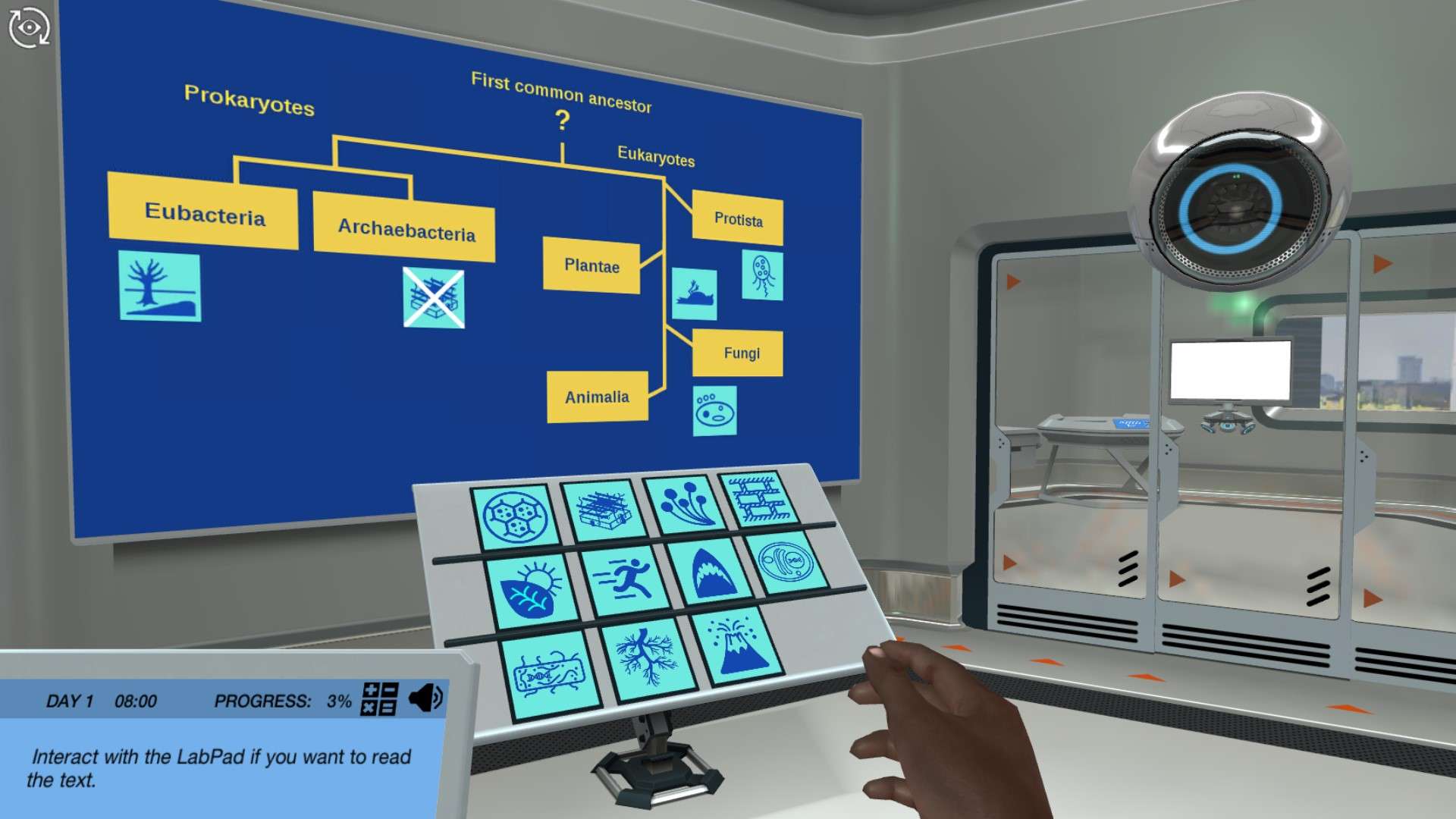Heading 1
Heading 2
Heading 3
Heading 4
Heading 5
Heading 6
Lorem ipsum dolor sit amet, consectetur adipiscing elit, sed do eiusmod tempor incididunt ut labore et dolore magna aliqua. Ut enim ad minim veniam, quis nostrud exercitation ullamco laboris nisi ut aliquip ex ea commodo consequat. Duis aute irure dolor in reprehenderit in voluptate velit esse cillum dolore eu fugiat nulla pariatur.
Block quote
Ordered list
- Item 1
- Item 2
- Item 3
Unordered list
- Item A
- Item B
- Item C
Bold text
Emphasis
Superscript
Subscript
About This Simulation
Follow the million-year evolutionary journey of a canid colony as you create random mutations in their DNA and critique biological evidence to build a taxonomic tree that unites all life on Earth.
Learning Objectives
- Investigate the process of evolution
- Critically determine how evolutionary processes have contributed to contemporary life
- Describe how the theory of evolution was derived
- Explain the concepts of natural selection, genetic drift, and mutation
- Apply the Hardy-Weinberg principle to demonstrate genetic variance in evolution
- Describe and compare the structural and functional organization of the major kingdoms of Life
- Explain the evolutionary relationships linking and separating the five kingdoms
- Predict the physiological and anatomical features of organisms within a kingdom and group
- Explain why viruses are not part of any kingdom
About This Simulation
Lab Techniques
- Taxonomy
- Phylogeny
Related Standards
- HS-LS4-1
- HS-LS4-4
- Partially HS-LS3-3
- HS-LS4-2
- HS-LS4-3
- HS-LS3-1
- Biology Big Idea 1: Evolution
- 5.3 Classification of biodiversity
- 5.2 Natural selection
- 1.5 The origin of cells
- 5.1 Evidence for evolution
Learn More About This Simulation
Have you ever wondered how the tiny, friendly Chihuahua is related to the wild and ferocious ancestor canids of prehistory? In this simulation, we’ll explore the evidence that built the Theory of Evolution and the incremental genetic steps taken as one species branches from another.
Building the Tree of Life
Build your own taxonomic tree by comparing the biological differences that discriminate between the major kingdoms of life. To complete your tree, you’ll examine the fossil evidence for evolutionary divergence and assign the defining features to each kingdom.
Examining troublesome species
Once your tree is strong and clear, you’ll experiment with placing troublesome organisms into different kingdoms. Sometime morphology alone can’t discriminate between species, so you’ll need to turn to the phylogenetic evidence to help determine the lineage of a species.
Travel through time with a colony of canids
Evolution takes place over millions of years so experimenting with genetic information is practically impossible! In the virtual lab, you can time jump your way through thousands of years to observe the impact of random mutations you make in an organism’s DNA. Using Hardy-Weinberg theory, you will predict the genetic profile of your colony. How will your creatures look and behave over a million years?
For Science Programs Providing a Learning Advantage
Boost STEM Pass Rates
Boost Learning with Fun
75% of students show high engagement and improved grades with Labster
Discover Simulations That Match Your Syllabus
Easily bolster your learning objectives with relevant, interactive content
Place Students in the Shoes of Real Scientists
Practice a lab procedure or visualize theory through narrative-driven scenarios


FAQs
Find answers to frequently asked questions.
Heading 1
Heading 2
Heading 3
Heading 4
Heading 5
Heading 6
Lorem ipsum dolor sit amet, consectetur adipiscing elit, sed do eiusmod tempor incididunt ut labore et dolore magna aliqua. Ut enim ad minim veniam, quis nostrud exercitation ullamco laboris nisi ut aliquip ex ea commodo consequat. Duis aute irure dolor in reprehenderit in voluptate velit esse cillum dolore eu fugiat nulla pariatur.
Block quote
Ordered list
- Item 1
- Item 2
- Item 3
Unordered list
- Item A
- Item B
- Item C
Bold text
Emphasis
Superscript
Subscript
A Labster virtual lab is an interactive, multimedia assignment that students access right from their computers. Many Labster virtual labs prepare students for success in college by introducing foundational knowledge using multimedia visualizations that make it easier to understand complex concepts. Other Labster virtual labs prepare learners for careers in STEM labs by giving them realistic practice on lab techniques and procedures.
Labster’s virtual lab simulations are created by scientists and designed to maximize engagement and interactivity. Unlike watching a video or reading a textbook, Labster virtual labs are interactive. To make progress, students must think critically and solve a real-world problem. We believe that learning by doing makes STEM stick.
Yes, Labster is compatible with all major LMS (Learning Management Systems) including Blackboard, Canvas, D2L, Moodle, and many others. Students can access Labster like any other assignment. If your institution does not choose an LMS integration, students will log into Labster’s Course Manager once they have an account created. Your institution will decide which is the best access method.
Labster is available for purchase by instructors, faculty, and administrators at education institutions. Purchasing our starter package, Labster Explorer, can be done using a credit card if you are located in the USA, Canada, or Mexico. If you are outside of North America or are choosing a higher plan, please speak with a Labster sales representative. Compare plans.
Labster supports a wide range of STEM courses at the high school, college, and university level across fields in biology, chemistry, physics, and health sciences. You can identify topics for your courses by searching our Content Catalog.















